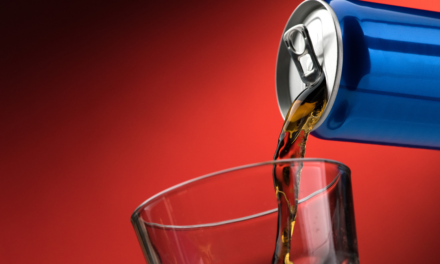Are You Gluten Intolerant?
The impact of wheat sensitivity and the development of individual autoimmune diseases.
I was recently listening to an interview with Dr. Tom O’Bryan who is an internationally recognized speaker focusing on food sensitivities and the development of autoimmune diseases. He explained in a simple way what happens in your gut and consequently in your body when consuming unhealthy food.
The gut’s role in the body’s overall health.
It is known that the gut is the “chief gatekeeper” and regulator for what enters our bloodstream. With this knowledge in mind, it is no surprise our gut health is attributable to many diseases, especially those of the autoimmune kind.
What is intestinal permeability?
Permeability is not bad, it’s how we absorb our vitamins and minerals. It’s excessive permeability that’s bad for you. Gluten is one of the factors that may contribute to excessive intestinal permeability When you eat food it’s not going directly in your body it first has to go to the intestines. The inside of the intestines is lined with the villi and microvilli. Dr. O’Bryan compares the microvilli with a cheesecloth that only lets small molecules through to enter the bloodstream.

How the body absorb nutrients
Our intestines are tubes that are 20 to 25 feet long because some foods break down very quickly, while others are more difficult to break down.
Proteins are like a pearl necklace and our enzymes are like scissors who break down the necklace in tiny little pearls. They go through the cheesecloth into the bloodstream. That’s how we absorb our vitamins, minerals, proteins, fats.
The bigger pearls have to go down further in the intestines so they get broken down into smaller pearls so they can go through the cheesecloth into the bloodstream.
Gluten tears the cheesecloth
Gluten triggers a temporary leaky gut within 5 hours after eating. This will heal itself unless you have a gluten sensitivity or celiac disease.
You eat a Toast for breakfast, the cheesecloth gets tears but it heals, a sandwich for lunch the cheesecloth gets tears but it heals, a pasta for dinner the cheesecloth gets tears but it heals, croutons in your salad… until one day you don’t heal anymore.
The bigger pearls of the necklace (macromolecules) get now into the bloodstream because of the tears in the cheesecloth. Your immune system is trying to protect you from the toxic macromolecules that entered the bloodstream before they were fully digested. Your body doesn’t recognize these macronutrients as nutrition and makes antibodies to protect you. It’s important to let the cheesecloth heal.

Increased intestinal permeability also called leaky gut
When you constantly eat food, that you can’t digest properly, like gluten, you increase the inflammatory bonfire in your gut. Other factors that can contribute to a leaky gut syndrome are, long-term NSAID use (like Ibuprofen), stress and chronic inflammation, an unhealthy diet e.g. nutrient deficiencies, excessive sugar or alcohol intake,…
Food to increase good bacteria and food for the bacteria
The simpler the food the likely the food is healthier. Convenience food set us in time up for dis-function wherever the weak link in our chain is. Avoid processed carbohydrates like chips, French fries, bread, white rice, cookies, crackers, desserts, and sugars.

Fermented food
A serving of fermented food equals an entire bottle of a high-potency probiotic. Eat every day one forkful of fermented (non-pasteurized) food. They feed the good bacteria in your gut and create a good environment in your gut.
Prebiotic food
Prebiotics act as food for probiotics, so they feed the friendly bacteria in your gut. The more prebiotics that probiotics get to eat, the more efficiently these live bacteria work and the healthier your gut will be. Prebiotics also help with digestive problems and boost your immune system.
Garlic, onions, leeks, asparagus, bananas, barley, whole oats, apples, konjac root, burdock root, yacon root, cocoa, seaweed, dandelion greens, Jerusalem artichoke, chicory root,
Probiotic food
Probiotics are live microorganisms that can be found in fermented food.
Non-vegan probiotics
For example; yogurt, kefir, and some kinds of cheese.
Vegan probiotics
For example; sauerkraut, kimchi, pickled vegetables, water kefir, tempeh, sourdough bread, miso, kombucha
Supplements
If you don’t have the time to prepare or in case you don’t like any of these foods you can alternately take supplements.



Below you find recipes to make your own fermented Kombucha or sauerkraut at home

Recipe: Kombucha
Kombucha is fermented tea. A fungus (Scoby) of bacteria and yeast feeds on the sugars in the tea and converts them into acids and a tiny amount of alcohol (about 1 percent)
.
Ingredients
- 50 g of scoby (Here you can find a Kombucha brewing starters kit)
- 50 ml kombucha (from the store or from a previously made homebrew)
- 5 g loose black tea or 3 bags. It also works with green or white tea, but not with herbal infusions or tea that contains essential oil (such as earl gray)
- 60 g sugar (preferably unrefined cane sugar)
- 1 liter of filtered water
1 jar of at least 1 liter
Preparation method
Make tea with 250 ml of water and the sugar. Stir until the sugar is dissolved, strain, and pour into the jar. Add the rest of the water and the kombucha.
Allow to cool and add the Scoby. A scoby dies at temperatures above 40 degrees Celsius.
Do not close the jar with a lid, but with a cloth – the scoby should be able to breathe.
Let ferment. Most kombucha mushrooms take 1 to 2 weeks to ferment. Taste after a week: if the tea is still sweet, wait.
When the kombucha tastes nice and fresh, take the fungus out, along with 100 ml of your drink. In it, you can save the scoby for the next use.
You can now bottle the rest of the kombucha. This is also the time to add extra seasoning (ginger, lemon, fruit juice). A sealed bottle at room temperature will continue to ferment and become slightly sparkling. With a bottle in the refrigerator, the fermentation stops.

Recipe: Sauerkraut
The nice thing about making sauerkraut yourself is that you can vary endlessly. You can add plenty of herbs and spices and vary with cabbage varieties.
Ingredients
- 1 kg of white cabbage
- 10 g of Celtic sea salt
- 2 tsp caraway seeds
- 1 tsp fennel seeds
- 1 liter of brine (from 15 g of salt to 1 liter of water) optional
Preparation method
Put a kilo of chopped cabbage together with the salt in a sturdy bowl. Massage the cabbage with clean hands, until juice is formed. The more juice, the better.
Mix the caraway seeds and fennel seeds into the cabbage (Also try for example with dill, cumin, or black pepper as seasonings).
Place the mixture in the preserving jar and press firmly. Leave 2 cm from the edge of the pot. If necessary, add brine if the cabbage is not completely covered by the juice.
Fill the small jar with water, screw on the lid, and put on the cabbage, so that pressure is created and the cabbage remains in the moisture. You can also make use of a fermentation lid on a mason jar.
Cover the pot loosely with cling film or a tea towel. Leave the weck jar with the lid open at room temperature for 2-3 days. Then put it in a cool place (approx. 15 ˚C) for another 2-3 weeks.
Check regularly whether the cabbage is still in the moisture, otherwise, oxygen will be added and mold will develop.
Taste the sauerkraut after two weeks. If you are satisfied with the result, keep the jar in the refrigerator. For a softer taste, leave it in the cool place even longer.
Enjoy!!!
4 Comments
Trackbacks/Pingbacks
- How to boost your immunity to prevent illness and disease. - Transformelle - […] (source). You can get probiotics from a variety of foods like kombucha, sauerkraut, and kefir. On this blog post,…
- How to boost your immunity to prevent illness and disease - Transformelle - […] are the benefits of collagen? Are You Gluten Intolerant? What You Need To Know About Turmeric And […]
Submit a Comment





Did you find this post useful, inspiring? Save one of these pins above to your healthy lifestyle board on Pinterest.







I have been exploring for a little bit for any high quality articles or blog posts on this kind of space . Exploring in Yahoo I eventually stumbled upon this web site. Reading this information So i am satisfied to exhibit that I have an incredibly just right uncanny feeling I came upon just what I needed. I most unquestionably will make certain to do not disregard this site and give it a look regularly.
I would like to show thanks to you just for rescuing me from this particular scenario. After researching through the the net and obtaining views that were not productive, I assumed my life was done. Existing minus the answers to the problems you’ve solved as a result of your good post is a critical case, as well as the kind that might have badly damaged my entire career if I hadn’t come across your blog. That understanding and kindness in dealing with all the details was useful. I don’t know what I would’ve done if I had not come upon such a step like this. I’m able to now look forward to my future. Thanks for your time so much for this impressive and result oriented help. I won’t think twice to recommend your web sites to any person who should get care about this problem.
Great share, however, i didn’t find all the information i needed. But this article answered some of my questions i was looking for.
It抯 actually a cool and useful piece of info. I am glad that you shared this helpful info with us. Please stay us up to date like this. Thank you for sharing.